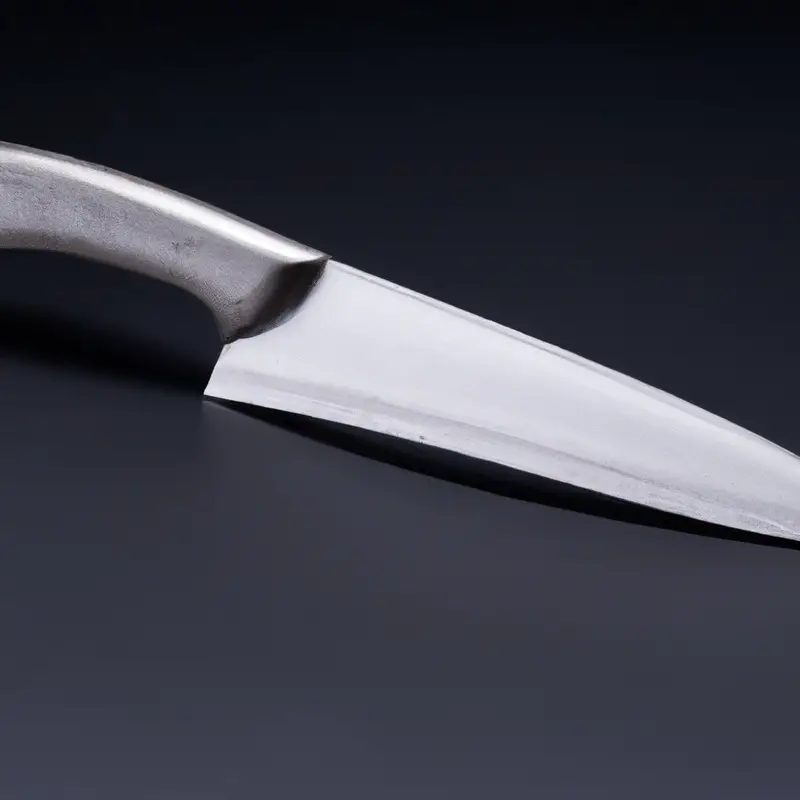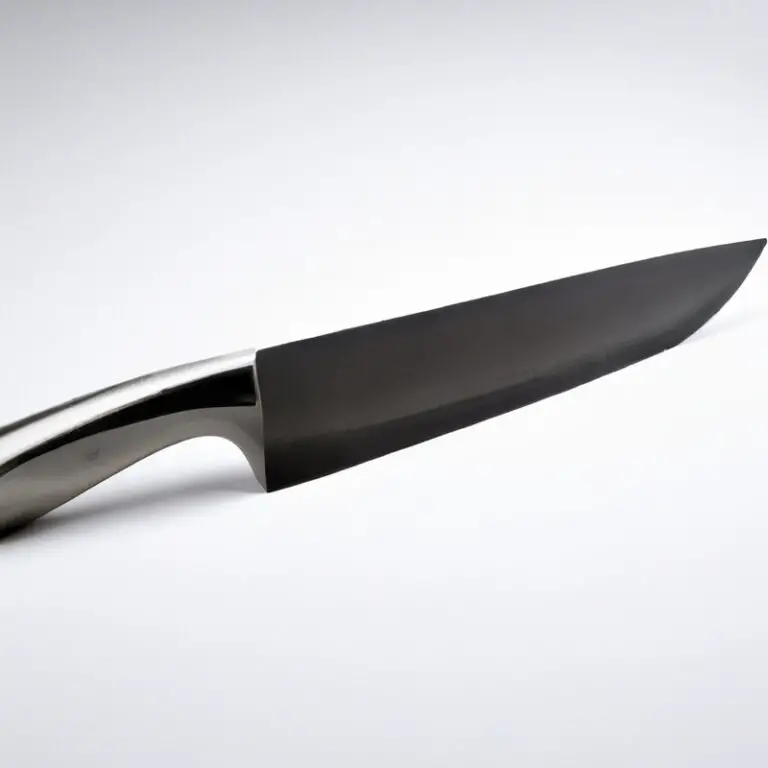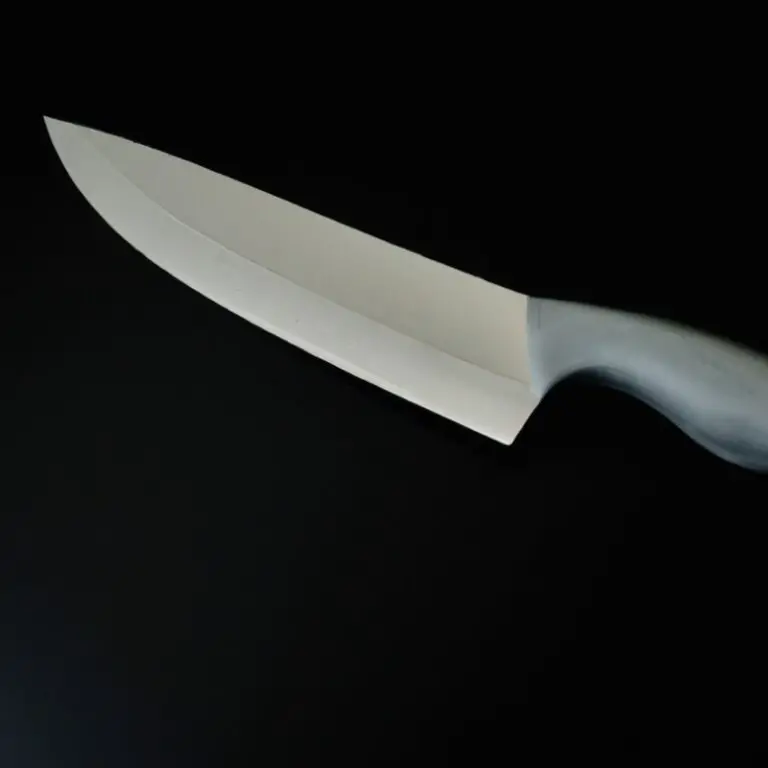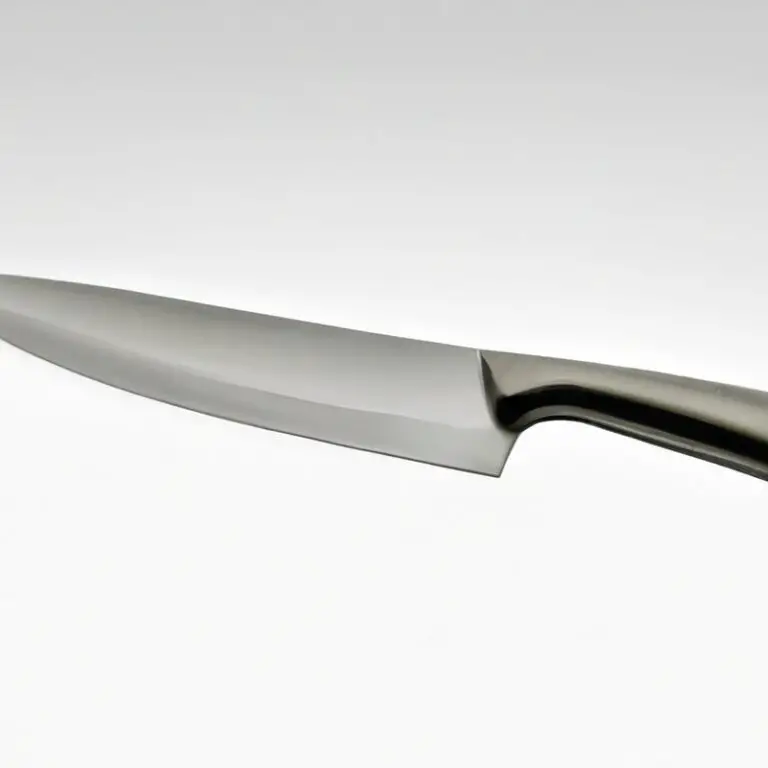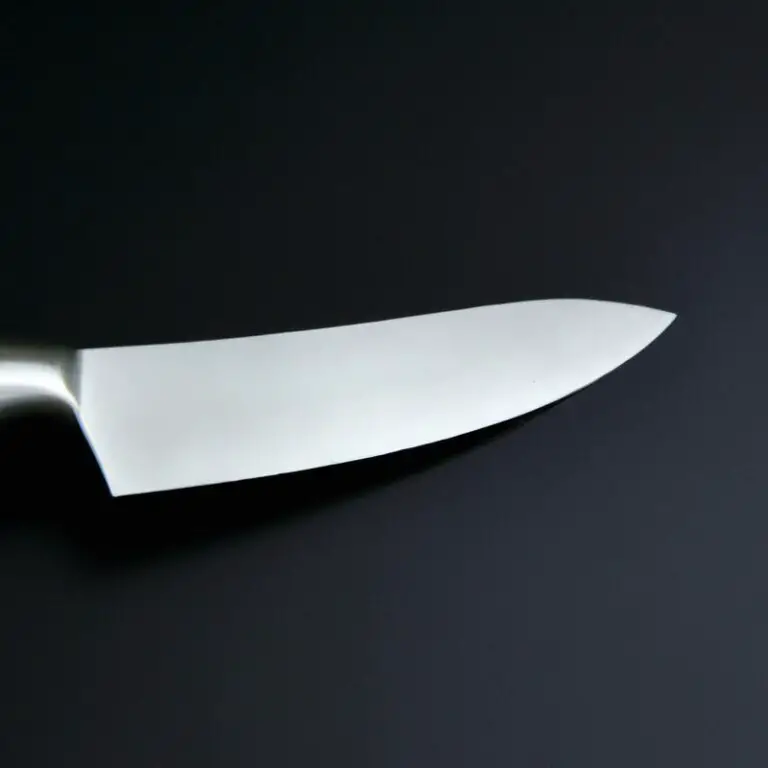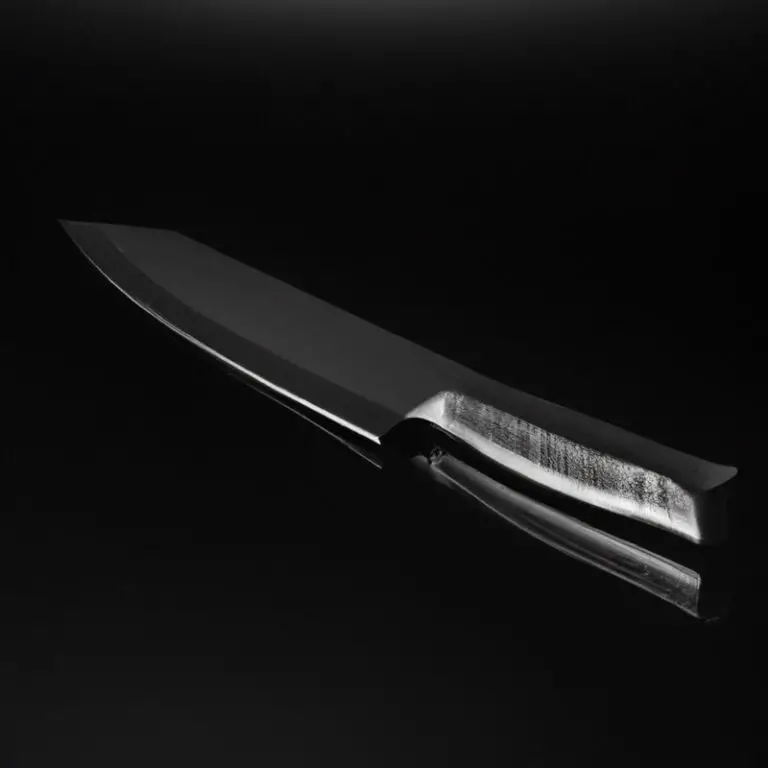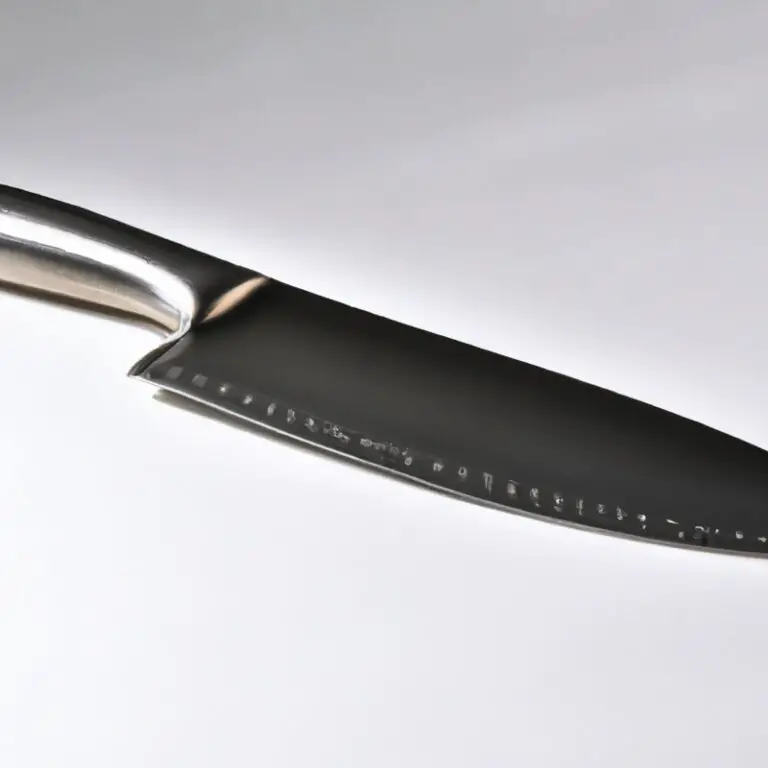How To Chop Onions With a Santoku Knife Without Tearing Up? Easy!
Key Takeaways:
- A sharp Santoku knife can minimize onion tears by reducing the amount of ruptured cells.
- Keeping the onion and knife blade moist with a damp towel can prevent irritation and tearing.
- Proper chopping techniques, such as using a rocking motion, can also reduce the release of sulfuric compounds.
- Utilizing onion goggles or cutting under running water can further prevent tearing and discomfort during onion preparation.
Have you ever experienced tears streaming down your face while chopping onions? It can be an unpleasant experience and can even affect the dish’s flavor.
Luckily, there’s a solution to this problem: using a Santoku knife.
As a self-proclaimed onion-chopping expert, I’ve learned a few tricks along the way to chop onions without tearing up. In this article, I’ll share everything you need to know about choosing the right Santoku knife, essential techniques for preparing the onion, proper techniques, and cutting styles.
Plus, I’ll give you valuable advice on how to maintain your knife.
Get ready to chop onions like a seasoned pro!
| S. No. | Steps | Description |
|---|---|---|
| 1 | Choose a sharp Santoku knife | A sharp knife will slice through the onion cleanly, instead of crushing it and releasing irritants. |
| 2 | Cut off the root end of the onion | Keep the root end intact, as it holds the layers together. |
| 3 | Peel the outer layer | Peel off the dry, papery layer from the outside of the onion. |
| 4 | Cut the onion in half lengthwise | Place the onion on a cutting board and slice it in half from the root end to the tip. |
| 5 | Cut off the top of each half | Remove the tough, stemmy top of each onion half. |
| 6 | Make thin, vertical slices | Hold one of the onion halves firmly with your non-dominant hand, and use the Santoku knife to make thin vertical slices, without cutting through the root end. |
| 7 | Make horizontal slices through the onion | Hold the onion half in place and make horizontal slices through it, starting from the top and working your way down towards the root. |
| 8 | Chop the onion into small pieces | Use your knife to chop the sliced onion into small, even pieces. To avoid tears, breathe through your mouth and not your nose and keep the onion close to your body and your knife close to the board. |
Understanding the Right Santoku Knife for Chopping Onions without Tears
To chop onions without tears, it is crucial to use the right Santoku knife. Look for a blade made of high-quality stainless steel, and choose a size that feels comfortable in your hand.
The blade should be sharp, allowing for precise cuts without crushing the onion.
The shape of the blade should be flat along the bottom and curved towards the tip, allowing for a rocking motion when chopping. It is also important to choose a knife that feels balanced, with a handle that fits comfortably in your hand.
A well-crafted Santoku knife, combined with the right cutting techniques, will make chopping onions a breeze.
Essential Techniques for Preparing the Onion for Chopping with a Santoku Knife
Before you start chopping onions with a Santoku knife, it’s important to prepare them properly. The following are essential techniques for preparing the onion for chopping with a Santoku knife:
- Cut off both ends of the onion, making it stable on the cutting board.
- Cut the onion in half lengthwise, leaving the root end intact, which helps hold the onion together while you chop.
- Peel off the papery skin and the first layer of the onion.
- Make shallow horizontal cuts into the onion, about a quarter of the way through, to create a grid-like pattern.
- Hold the onion firmly with one hand and use the Santoku knife to chop vertically along the cuts, following the curve of the onion to make a smooth and efficient slicing motion.
By following these essential techniques, you’ll be able to prepare the onion properly and make consistent and precise cuts with your Santoku knife.
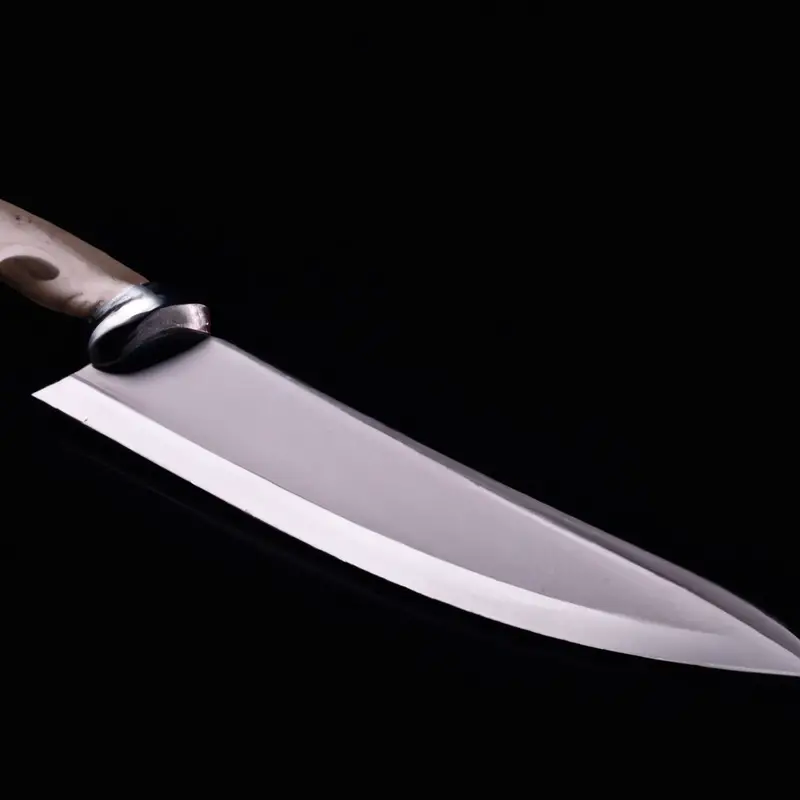
The Proper Way of Holding the Santoku Knife When Chopping Onions
When it comes to holding the Santoku knife while chopping onions, you should have a proper grip to prevent accidents and make precise cuts. The handle should fit comfortably in your hand, allowing you to keep a firm grip on the knife.
The index and middle fingers should be placed on the blade’s side, while the thumb goes towards the knife’s spine.
The other hand should hold the onion steady while the knife cuts through it in a rocking motion. It’s essential to keep the blade parallel to the cutting board and avoid lifting the blade while making cuts.
The Different Cutting Styles to Employ When Chopping Onions with a Santoku Knife
When it comes to chopping onions with a Santoku knife, there are several different cutting styles that can be employed. The most common is the back-and-forth rocking motion, which involves sliding the knife back and forth across the onion while maintaining a consistent angle.
Another method is the push-pull motion, which involves pushing the knife forward and then pulling it back in a slicing motion.
This can be useful for making thin slices or julienne cuts. Finally, the chop-and-slide method involves chopping the onion into pieces and then sliding the pieces into a pile.
Whichever method is chosen, it is essential to maintain a consistent angle and to ensure that the knife remains sharp to reduce tearing and crushing of the onion.
How to Adjust the Blade Angles of the Santoku Knife When Chopping Onions
To adjust the blade angle of the Santoku knife when chopping onions, start by keeping the blade perpendicular to the onion. Gradually, tilt the knife’s blade downwards and make a forward slicing motion.
Avoid using a back and forth motion while chopping.
Work on the angle to ensure a smooth cut through the onion without putting much pressure on it. By following these tips, you can efficiently adjust the blade angle of the Santoku knife and chop onions with ease.
Tips for Avoiding Crushing or Bruising the Onion with the Santoku Knife
To avoid crushing or bruising onions while using a Santoku knife, begin by ensuring your knife is sharp. A dull blade may bend the onion, leading to crushing and bruising.
Use a rocking motion when chopping with the Santoku knife, keeping the tip of the blade on the cutting board and guiding the blade with your hand to prevent crushing.
Cut the onion vertically, starting from the top and slicing towards the bottom. Hold the onion firmly but not too tightly to prevent bruising.
Finally, avoid chopping the root of the onion, as it is where the strongest flavor is concentrated and can cause tearing up.
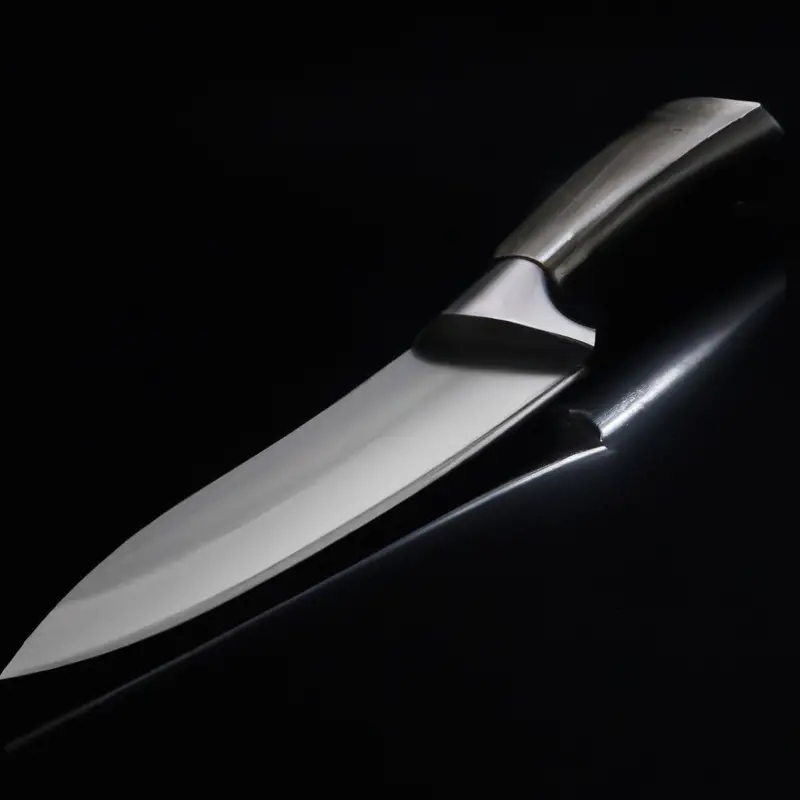
Using the Santoku Knife to Make Uniform and Consistent Onion Cuts
Using a Santoku knife can help achieve uniform and consistent onion cuts. Start by trimming the ends and cutting the onion in half, then remove the papery skin.
With the flat side down, slice the onion horizontally, leaving the root intact to hold the onion together.
Turn the onion and slice vertically to achieve the desired size of the cuts. Keep the knife moving in a rocking motion for optimal results.
With the sharp and thin blade of the Santoku knife, it is easier to make precise cuts without crushing or bruising the onion.
How to Clean and Maintain the Santoku Knife After Chopping Onions
After chopping onions with a Santoku knife, it is essential to clean and maintain the knife properly to keep it in good condition. Here are some simple steps to follow:
- Rinse the blade with warm water immediately after use to remove any onion residue.
- Avoid using abrasive sponges or cleaning agents while cleaning the Santoku knife as they can damage the blade.
- Dry the blade with a clean cloth or paper towel before storing it.
- Store the knife in a knife block or a protective sheath to prevent the blade from getting damaged.
- Regularly sharpen the Santoku knife with a sharpening stone or a honing steel to maintain its sharpness.
By following these steps, you can keep your Santoku knife in excellent condition and prevent it from getting dull or rusted. Remember to use only gentle and non-abrasive methods for cleaning and maintaining the knife to keep the blade sharp and maintained for longer.
Expert Advice on Choosing the Right Cutting Board to Use with Santoku Knife when Chopping Onions
Choosing the right cutting board when chopping onions with a Santoku knife is crucial for both the longevity of the knife and the quality of the cuts. Experts recommend using cutting boards made of softwood, bamboo, or plastic as they are gentle on the knife’s edge and do not dull the blade quickly.
Avoid using glass or ceramic cutting boards as they can cause the blade to chip or break.
Additionally, using a cutting board with a non-slip surface can prevent accidents and ensure stability while chopping. It is also important to choose a cutting board that is large enough to accommodate the onion while leaving ample space for the knife to move freely.
Clean the cutting board regularly to prevent the growth of bacteria and cross-contamination between foods.
By selecting the right cutting board, you can enhance your chopping experience, maintain the quality of your Santoku knife, and enjoy perfectly chopped onions without any tears.
Final Verdict
Mastering the art of chopping onions with a Santoku knife is a game-changer for any home cook. Not only does it eliminate those dreaded tears, but it also ensures consistent and precise cuts every time.
By following the essential techniques discussed in this article, you’ll be able to handle your Santoku knife with confidence and create uniform onion cuts without bruising or crushing the vegetable.
Remember to choose the right cutting board and maintain your knife regularly for optimal results. By incorporating these tips into your cooking routine, you’ll elevate your culinary skills and impress your guests with your perfectly chopped onions.
So go forth and chop with confidence!

